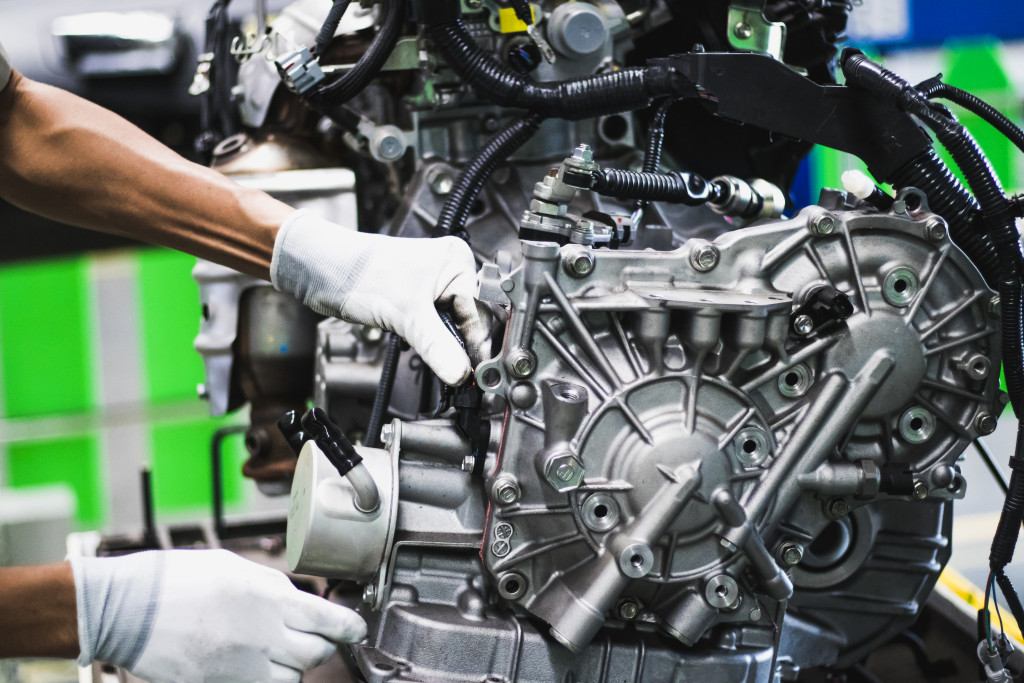- Harnessing automation and robotics can increase efficiency, reduce human error, and free up workers for more complex tasks.
- AI and machine learning allows manufacturers to streamline operations, optimize production schedules, and improve quality control.
- The Industrial Internet of Things (IIoT) provides real-time data for smarter decision-making.
- Additive manufacturing enabled rapid prototyping and reduced production times.
- Advanced technologies can potentially boost a business’ competitive edge if strategically implemented.
From the fourth quarter of 2021 to 2022, nonfarm business labor productivity plummeted by 1.5 percent due to a 0.8 percent rise in production and a 2.3 percent increase in working hours. This follows earlier decreases in labor efficiency by 2.1 percent for the second quarter of 2022 and 1.1 percent for the third one, indicating an ever-growing trend of declining productivity over time.
The manufacturing landscape continuously evolves, and staying ahead of the curve often requires leveraging technological advancements to enhance efficiency and competitiveness. This blog post will explore how harnessing modern technologies can transform manufacturing processes and lead to significant productivity gains. Whether you are a business owner, entrepreneur, or technology enthusiast, this piece will provide insights into the future of manufacturing and guide you in identifying the most effective and innovative methods for your operations.

Embracing Automation and Robotics
Introducing automation and robotics into your manufacturing process can significantly increase efficiency and allow your business to stay competitive in an increasingly automated world. Automating repetitive and mundane tasks frees your workforce for more complex, strategic, or creative tasks that require human intelligence, flexibility, and decision-making capabilities.
Reduce Risk
Automation integration also reduces the risk of human error, leading to less waste and a safer working environment for your employees. In addition, robotic systems can work tirelessly 24/7, boosting your manufacturing capacity and reducing labor costs in the long run.
Robotics
To increase productivity, you can also use reliable advanced robotics for manufacturing. While the equipment cannot do everything, it can handle repetitive tasks to allow the workers to focus on other tasks that cannot be automated. Additionally, these robots can reduce workplace accidents.
Harnessing the Power of AI and Machine Learning
Implementing artificial intelligence (AI) and machine learning technologies in manufacturing can enable businesses to streamline their operations, optimize production schedules, and improve quality control. AI-powered algorithms can analyze vast amounts of data, identify inefficiencies, and offer enhanced solutions.
Adaptive Technology
Moreover, machine learning allows these systems to adapt and become more efficient over time, ensuring continuous improvement in your manufacturing processes. In quality control, AI can rapidly detect and report anomalies in production, quickly resolving issues that may otherwise result in costly delays or product recalls.
Optimized Supply Chain
AI and machine learning can also be used to optimize inventory management, saving companies money as they only need to keep sufficient stock levels for current orders. This helps maintain leaner inventories while still meeting customer demand promptly. Additionally, AI-powered systems can predict future customer needs, enabling manufacturers to better anticipate them and make production planning much more efficient.
Leveraging the Industrial Internet of Things (IIoT)
The Industrial Internet of Things (IIoT) refers to integrating smart sensors, software, and communication networks within industrial settings. These connected devices can monitor and control various aspects of a manufacturing process, providing real-time data and insights that empower smarter decision-making.
Streamline and Optimize Operations
With this wealth of information at your fingertips, manufacturing operations can be streamlined and optimized for efficiency. Furthermore, IIoT enables predictive maintenance, meaning machine issues can be identified and resolved before they escalate to significant production problems, minimizing downtime and maximizing productivity.

Adopting Additive Manufacturing and 3D Printing
Additive manufacturing, or 3D printing, is a powerful tool for streamlining production and reducing the time it takes to bring a product to market. Manufacturers can create complex and custom products with little to no waste material by printing parts and components layer by layer.
Rapid Prototyping
This technology allows for rapid prototyping and shorter production times. It enables manufacturers to produce small batches or even one-off custom parts – something that would previously have been cost-prohibitive using traditional manufacturing methods. With reduced waste and faster response times, additive manufacturing presents a more efficient and sustainable approach than conventional production processes.
Significant Time and Investment
Adopting additive manufacturing requires a significant time and financial investment and an understanding of the technology’s capabilities. Companies must also ensure that they have access to high-quality materials, experienced personnel, and reliable equipment. Once these investments are made, however, the potential benefits can be tremendous. 3D printing enables manufacturers to quickly create and iterate on multiple designs, test various materials and production methods, and reduce costs associated with trial and error.
The future of manufacturing hinges on the strategic implementation of advanced technologies capable of overhauling how businesses approach production. By following the recommendations in the article, businesses can drive efficiency, reduce waste, and unlock a wealth of opportunities to boost their competitive edge. With the right strategy in place, manufacturers have everything they need to capitalize on the potential of advanced technologies and stay ahead of the competition.





